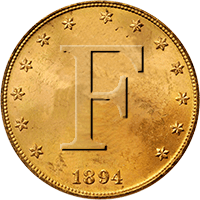Ed in SoDak
Member
Hi Steve,
Here's one for you that's been puzzling me for some time. I've been discovering these little patches of so-called native iron on my property and also in a fairly wide area around where I live.
These grade from black sands upwards to slaty bits and larger chunks with a weak magnetic attraction, and also "true iron" slivers and "nuggets" that weigh up into the multi-gram range. I posted a bit about it on another thread in the T2 forum, along with the pic seen below: http://www.findmall.com/read.php?58,1766028,1766887#msg-1766887

There's really nothing I can see on my land to suggest a bench placer, I just seem to fnd a lot of iron around here! I've read where iron and gold are often associated geologically, and not necessarily just in a placer context where heavies naturally concentrate together.
I guess black sands have to come from somewhere. I always thought magnetite didn't become "black sands" till ground down by stream action. Finding that fine of a magnetic grit so frequently in my yard has me scratching my chin in a hopeful way.
Then there's the larger solid metal chunks I find. Some may be "schrapnel" off a dozer blade or logging equipment, but so very few of them appear to have any manmade evidence that I am once again wondering if those are natural, manmade or possibly meteorites.
I have some pretty detailed geologist's and mining engineer's reports for the several historical mines of record that share this gulch, and there is scant to no mention of all this iron.
Most all the mines on this gulch are located along a fault with quartz outcroppings and reports of some native gold within. I also find apparent gossan outcrops of rusty clays and a lot of hole-shot and very rusty-looking quartz, with some clear-to-white quartz in areas.
For the most part the iron is a nuisance detector signal, but then maybe it's also trying to tell me something. What it's saying to me is the part that I'm missing. Any help or experience? I'll ry to get better pics soon.
Thanks!
-Ed
Here's one for you that's been puzzling me for some time. I've been discovering these little patches of so-called native iron on my property and also in a fairly wide area around where I live.
These grade from black sands upwards to slaty bits and larger chunks with a weak magnetic attraction, and also "true iron" slivers and "nuggets" that weigh up into the multi-gram range. I posted a bit about it on another thread in the T2 forum, along with the pic seen below: http://www.findmall.com/read.php?58,1766028,1766887#msg-1766887
There's really nothing I can see on my land to suggest a bench placer, I just seem to fnd a lot of iron around here! I've read where iron and gold are often associated geologically, and not necessarily just in a placer context where heavies naturally concentrate together.
I guess black sands have to come from somewhere. I always thought magnetite didn't become "black sands" till ground down by stream action. Finding that fine of a magnetic grit so frequently in my yard has me scratching my chin in a hopeful way.
Then there's the larger solid metal chunks I find. Some may be "schrapnel" off a dozer blade or logging equipment, but so very few of them appear to have any manmade evidence that I am once again wondering if those are natural, manmade or possibly meteorites.
I have some pretty detailed geologist's and mining engineer's reports for the several historical mines of record that share this gulch, and there is scant to no mention of all this iron.
Most all the mines on this gulch are located along a fault with quartz outcroppings and reports of some native gold within. I also find apparent gossan outcrops of rusty clays and a lot of hole-shot and very rusty-looking quartz, with some clear-to-white quartz in areas.
For the most part the iron is a nuisance detector signal, but then maybe it's also trying to tell me something. What it's saying to me is the part that I'm missing. Any help or experience? I'll ry to get better pics soon.
Thanks!
-Ed
